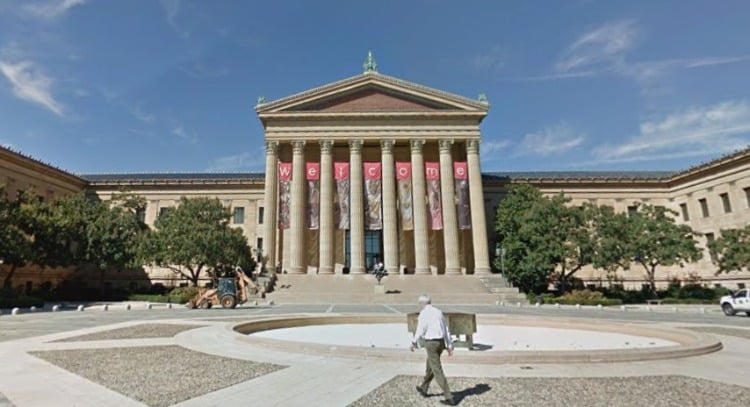The Philadelphia Museum Of Art
This entry detailing some interesting information about the Philly Museum of Art is presented by the slip and fall attorneys at Philly Slip and Fall Guys.
Known as the Pennsylvania Museum and School of Industrial Art until nearly the middle of the last century, the PMA has grown to become not only a landmark of the City of Brotherly Love, but also of the entire state of Pennsylvania and perhaps even the United states as a whole. Its vast collection of art indeed make it one of the largest exhibitions in the country, and an absolute must-see for tourists who spend any amount of time in the city, whether it be a couple hours or a couple weeks.
In the present day, the PMA holds more than 200,000 works from many periods of time including the Renaissance, medieval times, the ancient world, the Impressionist period and, of course, from the present day. Collections range from historic suits of armor to Picasso and everything in between.
The Pennsylvania Museum and School of Industrial Art
The Pennsylvania Museum and School of Industrial Art opened in May 1877, with its initial collection containing objects exhibited at the 1876 Centennial Exposition. Many more artifacts were donated by the public, as well as by American philanthropist Clara Jessup Moore.
In the early 1900s, the museum started education and membership programs geared towards the public. Fiske Kimball, the museum director during the explosive growth of the 1920s, helped the museum reach the million visitor mark in 1928. This year also marked the opening of the building on Fairmount park that starts today, and which has become an worldwide icon.

Broad marketing efforts and the leadership of President Stokes helped to keep the Museum alive and well during the Great Depression, while the 1940s witnessed even more extraordinary growth in the collection, including the John D. McIlhenny and George Grey Barnard Collections. Acquisitions of the ’50s, including the Arensberg Collection, all but assured the Museum’s prominence as a destination in which to see masterpieces of early modern art; a number of period rooms were opened to the public in this decade as well.
The decades of the ’80s and ’90s saw an even more aggressive expansion in the collection, with additions ranging from Edgar Degas’s infamous After the Bath to Twombly’s Fifty Days at Iliam. Furthermore, the Museum made great technological strides as it prepared to enter the 21st century; many functions became digitized and computerized, additional “green” (energy-saving) measures were implemented, and new enhancements were undertaken both inside the galleries and outside on the Museum grounds.
The Modern Philly Museum of Art
At the turn of the millennium, the Philadelphia Museum of Art further expanded, converting the neighboring and former headquarters of the Fidelity Insurance Company into the Ruth and Raymond G. Perelman Building. The newly adopted building now contains galleries for costumes and textiles, contemporary art and design along with prints and drawings and even an open-to-the-public library.
The year 2009 brought with it expansion of the Museum expanded to include the Anne d’Harnoncourt Sculpture Garden. This Garden was dedicated to the memory of the director and chief executive of the PMA who had died suddenly in 2008.
Our Local Team
The slip and fall attorneys at Philly Slip and Fall Guys have been defending the rights of Philly residents whose lives have been devastated by falling injuries. If you’ve been victim to one of these incidents and are considering all of your legal options, give our team a call today to learn more.
